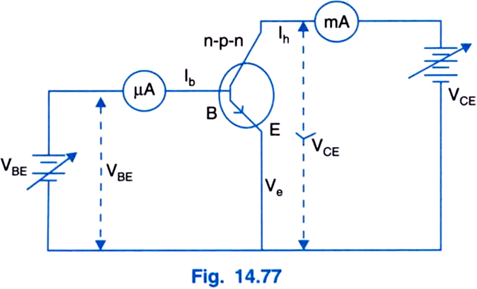For an n-p-n transistor in the common emitter configuration, draw a labelled circuit diagram of an arrangement for measuring the collector current as a function of collector emitter voltage for at least two different values of base current. Draw the shape of the curves obtained. Define the terms:
(i) ‘output resistance’ and (ii) ‘current amplification factor’ .


